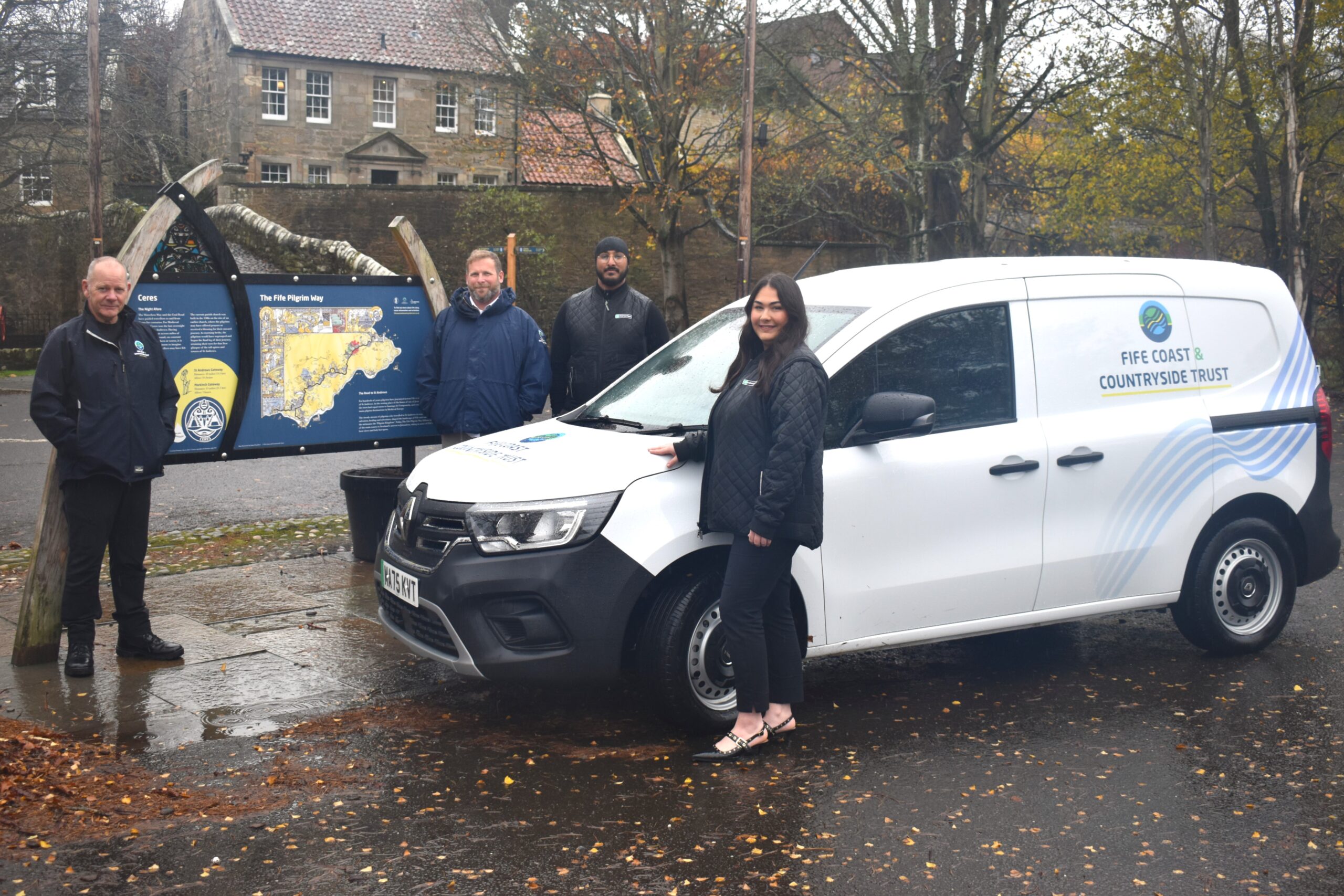- experience
- engage
- enjoy
Restoring the River Leven: a Year of Progress
Publish Date: Friday December 20, 2024

Partners involved in the Restoring the River Leven Project have pledged to continue closely monitoring the site and its recovery following a year of remarkable progress.
Improvements have been made to a two-and-a-half mile stretch of the waterway and its surroundings between Cameron Bridge and Leven throughout 2024. This is rejuvenating the river for the benefit of local people and wildlife.
The project team has transformed the area thanks to a series of innovative restoration initiatives. These initiatives are all aimed at improving biodiversity, enhancing habitats and strengthening community connectivity to the river.
And early indications are that the project has had the desired impact. There has been overwhelmingly positive feedback from locals and visitors alike. And local anglers have reported a significant increase in sea trout upstream of the restoration site.
Key achievements in recent months include:
- Kirkland Dam Rock Ramp and Bankside Restoration
A “nature-like” rock ramp has been constructed at Kirkland Dam. The ramp has used locally sourced stone from within the Leven catchment. Bankside areas have been carefully re-established with topsoil from nearby floodplain scrapes. To stabilize the banks while vegetation regenerates, biodegradable coir matting has been applied. Grass is already growing. - Floodplain Scrapes and Wetland Enhancements
Six floodplain scrapes were constructed—four near Kirkland Dam and two by the new Dunniface rail and river crossing. These areas now feature over 4,000 native wetland plants. Additional habitat diversity has been created through three “island/perch” features installed in the nearby wetland. - Burn Mill Dam Removal
The full removal of Burn Mill Dam downstream has opened the river to improved flow and fish passage. Adjacent areas were restored with seeded floodplains and coir matting to support vegetation growth. - In-Channel Habitat Enhancements
Two large wood structures were installed upstream at Kirkland Dam and Dunniface. These provide cover and habitat for aquatic species. These structures may be complemented by additional installations next year, pending approvals. - Green Bank Measures and Bank Reprofiling
Green bank measures using rock rolls and pre-vegetated coir rolls were implemented along a ~100m section downstream of the old creosote site. Additionally, a small section of gabion basket at Dam Wood was removed. Also, the bank was reprofiled to enhance the river’s natural flow and habitat.
As the winter months approach, native tree planting will begin around the floodplain near the Kirkland rock ramp, with species like willow, alder, and birch selected to complement the revitalized landscape.
Thrilled with progress
Councillor Jan Wincott, Fife Council’s Spokesperson for Environment and Climate Change, said: “The combination of innovative restoration designs, local material use, and strong community involvement has been a real recipe for success.
“It’s incredibly rewarding to already see signs of ecological improvement, like the increase in sea trout upstream. We’d like to thank everyone who has been involved since day one.”
During the works, the McGowan Environmental team (who led construction) were able to keep much of the site open for public access. This was a huge success and has led to positive reception by locals.
The Burn Mill Dam removal sparked the interest of Dam Removal Europe. They broadcast a live interview piece during the works, which promoted the benefits of such designs to a global audience.
First Minister John Swinney also visited the Kirkland rock ramp site in September to hear more about the project and the wider Levenmouth Connectivity Project plans.
Changing climate
Lynda Gairns, River Restoration Specialist at SEPA, said: “The project has met its aims of easing fish passage on two redundant historic barriers, with the removal of Burn Mill dam and the creation of a natural rock ramp at Kirkland.
“The newly created wetlands, habitats, planting and trees will enhance the area for both wildlife and people – and are especially important with our changing climate.”
Ed Heather-Hayes, Head of Development at Fife Coast and Countryside Trust, added: “While there is tree planting to be completed over the winter, it is a testament to the partnership and all interested parties that the project has been delivered to such a high standard, on time and comfortably within budget.
“We are excited to be carrying this spirit into Fife’s wider River Restoration Programme. Works start next year on the Back Burn and feasibility is getting underway on the Rosyth Rivers Project.”
Project partners Fife Council, SEPA WEF and Fife Coast and Countryside Trust would like to thank the excellent contractors, cbec, with support from RSK Environment Ltd, and McGowan Environmental for bringing this ambitious project and our vision for the River Leven to life.


